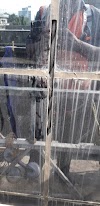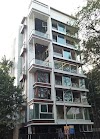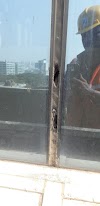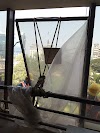It is very important to select the correct material with correct specifications to get better performance from Façade throughout its life. Some of the common materials that are used in any kind of Façade throughout the world. Aluminium, Mild steel, glass, Stainless steel, silicone, EPDM, etc., are the materials that are part of any Façade. But why are these materials used? that we are going to study in this blog post.
ANALYSIS OF FACADE MATERIAL SELECTION
Façade Material Selection Criteria
- Durability: should perform its function till the span of his life Strength: Face material and supporting material should withstand the wind load specified for that project.
- Cleanability: Dirt and dust accumulate over the Façade surface which gives an ugly look to the building and also affects thermal performances
- Material Sustainability: Material that needs less energy consumption as possible, saves energy during the performance, and reduces health hazards is a sustainable material
- Compatibility and suitability: Materials used for the Fabrication of the Façade should be compatible with each other/ e.g. Silicones get adhered to the surface of Aluminium and Glass surface for proper adhesion.
- Health and Safety: Selected material should not be harmful toxic or flammable during its fabrication. Though glass is a brittle material, it can be converted to safety glass. Material Economy: The material to be installed for the façade should be economical in a limit of Project cost.
- Material availability: Selected materials should be available with a variety of reliable sources from where a continuous supply of material is possible on time to avoid delays.
- Functional performance: Façade types are decided and designed to compensate for heat, allow the circulation of air, allow drainage of water, etc.
- Thermal Performance: The prime objective of installing the Façade is to reduce heat transfer.
- Acoustical: The prime objective of installing the Façade is also to reduce the noise. The material should be selected accordingly.
- Scratch-resistant: Material to be considered that has scratch-resistant properties or such finish should be applied over it.
- Lighter in Weight: Being lighter in weight reduces the weight of all supporting members including Aluminium Framing and subsequent screws, brackets, and anchor Fastener. Overall it reduces the cost of façade.
- Water resistant: Façade material should not absorb the water splashing over it. Water droplets should get flown away at the earliest.
Why Glass?
Earlier Human beings stayed in Caves which were replaced by
making piles of rocks. Again rocks were replaced by Soil, Wood, bamboo, and cotton.
That again got replaced by bricks and cement. Now, for some decades, Glass has
replaced concrete and brick walls and roofs resulting reduction in the weight of
Building construction. Glass is one of the dominating materials of modern-day architecture it has allowed raising building heights in the same area of land.
Glass is used because of it’s with following properties.
- Glass is a transparent material; it’s a pure and sustainable material.
- Low thermal conductivity. 1.38 W/(m·K)
- Transmits the light & Transmission can be controlled with types of coating.
- It does not deteriorate, corrode, stain or Fade.
- It does not react chemically and forms oxides, carbides, sulfides and, etc.
- Dirt, dust, water drops can be easily removed from the surface of glass.
- Its properties remain constant throughout its life unless it breaks. It can be recycled indefinitely and uses fewer natural resources.
- It gives freedom from Conventional building shapes.
- It’s a fire-resistant and Sound-reducing material.
- Lightweight metal. Its density is 2500 Kg/m3
- It is easily available worldwide.
- It reduces sound pollution wherever required
- Connects the external environment with the interior
Why Mild Steel?
Though Façade Panels are mainly consisting of Aluminium and
Glass, these panels are connected to civil structures with MS brackets. Most of
the time these brackets are also made with Aluminium serrated brackets. MS
sections are also used as inserts in Aluminium Sections when the section
available in the market is not strong enough. Also, in construction when there
is no civil construction behind Façade MS structure is installed. Brackets in
this case will be welded to such MS structure.
Following are the reasons why MS steel is used in Façade Construction.
- High tensile strength and malleability.
- can be joined/welded easily,
- It can support heavy weights.
- As required in building construction, mild steel is not easily susceptible to damage
- widely and cheaply available compared to other ductile metals
- The coefficient of Thermal expansion of concrete and mild steel are almost equal, Equal thermal coefficient will ensure the bond strength during thermal expansion, thus preventing bond failure.
- Hot-dip galvanizing to Mild steel ensures corrosion protection & gives brackets a longer lifespan and it is low-cost, sustainable, and durable.
- Hot-dip galvanizing to Mild steel adds resistance to rain, extreme temperatures, and the general effects of weathering.
Why Aluminium?
Aluminium is the major component in Façade that holds the
glass and same time looks beautiful from the inside than Mild steel. Its
following properties are perfectly suitable for use in Façade.
- Lightweight material.
- Its density is 2700 Kg/m3
- Resistant to weather and corrosion
- Easy to bend and fabricate
- Easy to recycle without losing quality by very little energy to recycle
- Get Powder Coated/anodized in different shades and patterns.
- It is the surface without coating also appears better than the steel
- Available in various shapes, sizes, thicknesses
- Can be extruded in customized cross-sections
- Pipes can be bent in Curve
- Compatible with other materials in Façade including Silicone, Glazing Tape
Why Stainless Steel Hardware ?
Products that are not possible enough to be made with
Aluminium with sufficient strength are made with Stainless steel. Hardware
including Handles, Butt or Friction Hinges, Restrictor Arm, and parts of Locks
are made with SS. SS screw having a Grade of 304 or 316 are generally
suggested. SS316 grade screws are highly recommended where screws are visible
from outside since they don’t rust but they are costlier than 304 grades.
- improved corrosion resistance,
- higher tensile strength, Improved ductility/malleability.
- It's corrosion resistance.
- It is an easy and cost-effective metal to clean and sustain.
- Stainless steel is preferred in clean and sterile environments as it is simple to clean and does not easily corrode.
- Stainless steel self-healing corrosion resistance provides an affordable and lower-maintenance alternative to treated or plated fasteners made from other materials.
- SS 316 grade contains molybdenum that drastically enhances corrosion resistance, especially for more saline or chloride-exposed environments.
Why Silicone?
Silicone has played a crucial role in the evolution of
Façade. Earlier, the edge of the Glass was placed over the surface of the Aluminum
and it was held by an Aluminium pressure plate by screws, and that plate was
covered by an aluminum Cap with Snap-fit. This affected the visual appearance
of Façade Since all glasses were mandatorily having aluminum boundaries visible
from the outside. Structure silicone has eliminated the use of such a system
and allowed architects to think about the look of the building without
Aluminium strips visible from the outside. In addition, it has allowed the making
of double/triple glass units.
- Generally, chemically non-reactive, resistant to attack by most chemicals.
- Naturally low thermal conductivity i.e. 1 W/Sq., Non-toxic when used appropriately.
- Highly water-repellent & Natural insulator, Electrical Conductivity is zeroExcellent Sealing Ability, Excellent adhesion to smooth surfaces;
- Extremely resistant to degradation by both radiation and oxidation.
- Physical and mechanical properties remain stable across a wide temperature range
- Easily extrudes in any weather and cures at ambient temperature by reaction with moisture in the air to form a durable, flexible silicone rubber seal.
- Structure Silicone cures to form an extremely tough elastomeric rubber ensuring a durable, flexible, watertight bond Excellent weather ability and high resistance to ultraviolet radiation, heat and humidity, ozone and temperature extreme.
- One of the type i.e. Fire sealant is filled between flashing of Rockwool and slab to restrict the smoke flowing to upper floor.
Why Glasswool / Rockwool?
When Double glass units are used in the Vision area is more
efficient than normal single-glazed windows. However, it also cost more. The same DGU can be used in front of the slab
but it is not recommended since no one is going to have the same benefit as in the vision area. Here single glass with Glasswool is installed to get the same
effect at a lower cost. Glasswool is placed in powder powder-coated GI sheet
tray. A coated sheet or thermal sheet is placed over Glasswool towards glass so
that the glasswool should not be visible from outside. Hence such assembly is
installed away from the inner surface of the glass. Glasswool imparts the following
properties:
- a thermal insulation material consisting of intertwined and flexible glass fibers, which causes it to "package" air, resulting in a low-density
- Good molding, small bulk density, low thermal conductivity, thermal insulation, good sound absorption performance, Features of corrosion resistance
- Glass wool products can be used for 20-30 years, no need to change.
- It has good high-temperature thermal stability, durability, and resistance to high-temperature shrinkage;
- Mineral wool is an excellent insulation because it can retain much air.
- Mineral wool is resistant to water, so it doesn't get damp and provides good growing conditions for fungi, mold, mildew, or other bacterial growth.
- Glass wool can get damp, and promote the growth of fungi, mildew, and rot, causing its insulating properties to be severely reduced. Hence GI sheets surrounded with sealant are used to reduce cost.
- Rockwool restricts the smoke flowing from the lower floor to the upper floor and restricts the heat flowing from the lower floor. This heat and smoke may cause Fire on the upper floor due to convention and radiation. It has more density than Glasswool, placed at the gap between the Façade and Slab in an enclosure made with GI sheet.
Why EPDM Gaskets?
EPDM rubber (Ethylene Propylene Diene Monomer
Rubber) is a type of synthetic rubber used in many applications. Like most
rubbers, EPDM is always mixed with fillers such as carbon black and/or calcium
carbonate, and plasticizers such as paraffin oil, and has useful rubber-like
properties only when cured. EPDM is a highly valuable material in the
construction industry (mainly aluminum manufacturing segment, curtain wall
industry, UPVC window and door segment – EPDM extruded rubber profiles, EPDM
expansion joint profiles segment), accounting for 40% to 45% of EPDM
consumption in the world. Within this category, curtain wall systems are the
largest application (40%).
- Long life and elasticity.
- Strong weather resistance.
- EPDM rubber products have excellent UV and ozone resistance,
- It functions in an external area where it is either continuously or occasionally exposed to the elements.
- Able to withstand Sunlight, Temperature, Ozone & UV, and Inclement Weather Conditions.
- Able to withstand humidity, dew, rain, snow, frost, or hail. EPDM is compatible with a wide range of other materials and demonstrates exceptional weather resistance.
- EPDM is also a Strong chemical resistant to a variety of chemicals, diluted acids and alkalis, and heat and weather.
- It can withstand the degrading effects of ozone, oxygen, heat, and weather. EPDM applications require little to no maintenance compared to the other elastomers in the market.
- When long-term weather resistance is needed, such as for waterproofing flat roofs of office buildings and homes, it is typically utilized in waterproofing.
- It is so tough and resilient that it can withstand numerous temperature fluctuations, tears, and abrasions.
- High durability: The thickest and most durable EPDM membranes can last over 40 years. They rarely rip or tear and are durable yet easy to repair and maintain.
Contact us for Facade work.
We will be happy to serve you.












0 Comments